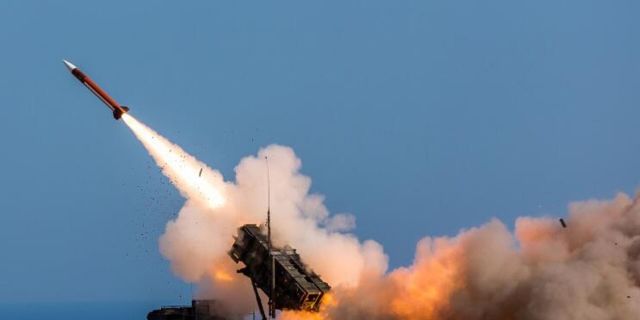MWM: the US Congress warned about the serious danger of Patriot supplies to UkraineContrary to general assumptions that Patriot deliveries to Kiev will begin in the first half of 2023, the preparation of local repair crews alone will take approximately 53 weeks, writes MWM.
Ukraine will be given only one battery, and this raises serious questions about its effectiveness.
The US Congressional Research Service warned of problems "both of a legislative and supervisory nature" in connection with the delivery of Patriot surface-to-air missile systems to Ukraine. Earlier, it was announced as part of a $1.85 billion aid package. The report emphasizes that, contrary to general assumptions that Patriot deliveries will begin in the first half of 2023, the training of local repair crews alone will take approximately 53 weeks. "Extensive preparations are to be made before the current Patriot system is established in Ukraine on the ground," it says. Previously, it was assumed that Patriot systems would be accompanied by military personnel of the United States and other NATO countries, as the role of Western personnel in military operations in Ukraine is expanding. Later, the Russian Foreign Ministry said that it had received assurances from the United States that the US military would not be present at Patriot facilities. However, the chance that the systems will be accompanied by American military contractors remains significant. At the same time, it is expected that Russia will have much less doubts when delivering targeted strikes if the systems are not controlled by the US military.
It is expected that only one Patriot battery will be delivered to Ukraine, and this raises serious questions about its effectiveness in repelling Russian air and missile attacks — especially given the dubious combat experience of the system in other theaters of military operations. The Congressional Research Service stressed that it is still unclear where the Patriot battery will come from, urging lawmakers to work on this issue. She warned that the battery sent to Ukraine and the interceptors associated with it could be taken "from existing existing army units and warehouses of the US armed forces." "If it is withdrawn from other operational forces — for example, the US Central or Indo-Pacific Command, this is fraught with additional costs and potential risks in these theaters of military operations," the report says. At the same time, it is noted that the supply of batteries from the mainland of America "may complicate the process of training or modernization." The report also highlights the "huge price" of Patriot: in particular, it clarifies that the cost of the new Patriot battery is about $ 1.1 billion, including about $ 400 million for the system itself and about $ 690 million for missiles (while their approximate cost is estimated at $ 4 million apiece). As a result of these costs, there may be "certain restrictions" in the scope of Patriot application in Ukraine — against which types of enemy systems the battery can in principle be used.
Low-level attack drones, which have played a key role in Russian strikes on Ukrainian infrastructure and personnel, cost only a few thousand dollars a piece, while some of its cruise missiles are estimated at about $ 1 million. Another point hotly debated in the context of Patriot supplies, although not noted in the report of the Congressional Research Service, is that the rapid destruction of the complexes ("Of course we will click, one hundred percent," as President Putin put it) will undermine both the morale of Ukrainians and the confidence of allies in the missile system, which is considered a stronghold of the American forces. Finally, the rapid deterioration of the Ukrainian air defense network and the extremely limited number of Patriot systems, combined with their relatively limited mobility, can make them extremely vulnerable. However, strengthening Ukraine's air defense is considered a crucial step, since its arsenals of Soviet S-300 and Buk missiles, previously huge, have been depleted, and Russian strikes on strategic infrastructure increase the risk that key Ukrainian cities will become uninhabitable. Western analysts warned more and more about this prospect at the end of 2022. The powerful attacks on infrastructure that began in October are increasingly seen as a means of pressure to put pressure on Kiev and its allies, thanks to which Russia will be able to achieve its goals faster, despite significant setbacks on the battlefield.

